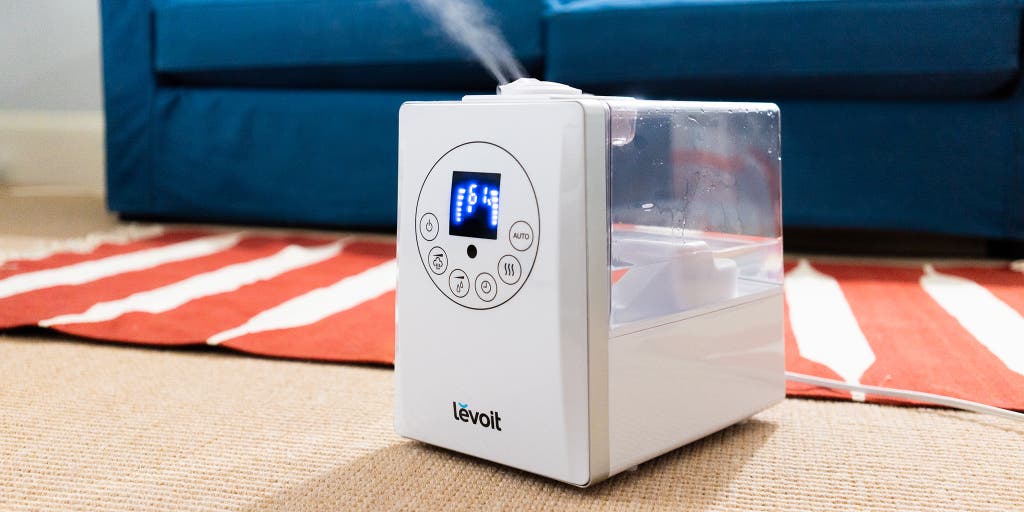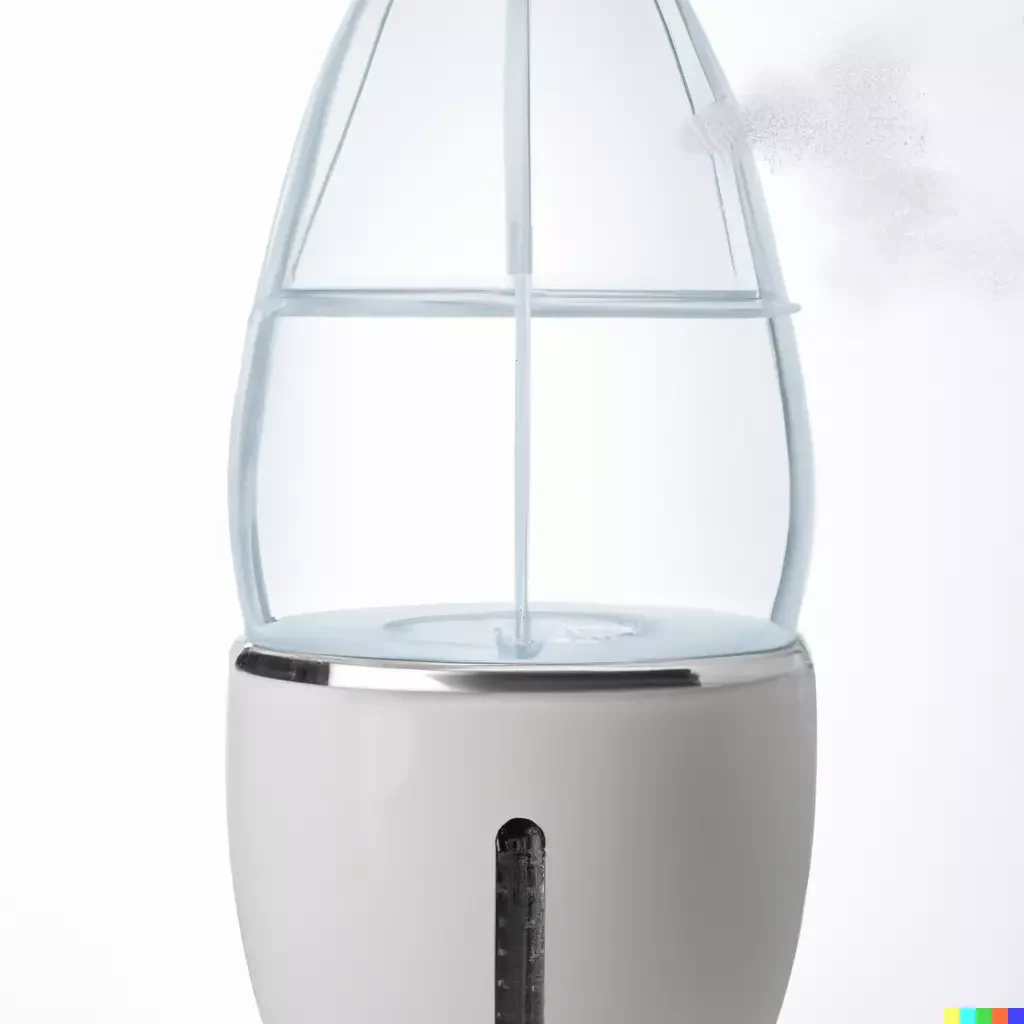A humidifier typically starts to work within a few minutes of being turned on. Noticeable increases in humidity levels can be felt within an hour.
Exploring the effective use of a humidifier, it is essential to understand the device’s operational mechanics. A humidifier dispenses moisture into the air, combatting the discomfort of dry climates or indoor heating. Its speed and efficiency depend on various factors including the size of the room, humidity level, type of humidifier, and its capacity.
A quick response in action, a humidifier starts to emit moisture almost immediately. For the user seeking relief from dry air symptoms, such as nasal congestion or dry skin, this is a crucial feature. Proper understanding and maintenance ensure a humidifier provides optimal benefits, enhancing air quality and overall comfort.
With a range of types—from evaporative to ultrasonic—selecting the right humidifier can create the perfect balance of moisture, fostering a healthier living environment.
Understanding Humidifiers
Humidifiers play a vital role in enhancing indoor air quality, particularly when combating the adverse effects of dry air. Whether dealing with winter’s chill or year-round arid climates, these devices add much-needed moisture to the environment, offering numerous benefits ranging from improved health to the preservation of wooden furniture. Let’s dive into the specifics of how these devices work and the various types available on the market.
Types Of Humidifiers
Different humidifiers serve different needs, with their design tailored to varying room sizes and humidification requirements. Some use steam, while others rely on ultrasonic vibrations. The main types include:
- Central Humidifiers: These are built directly into your home’s heating and air conditioning unit, providing moisture for the entire house.
- Evaporators: These blow air through a moistened filter, with fans distributing the resulting humidity.
- Impeller Humidifiers: A rotating disk flings water at a diffuser, which breaks the water into fine droplets that enter the air.
- Steam Vaporizers: These electrically powered units heat water before cooling it and expelling it into the air.
- Ultrasonic Humidifiers: These use ultrasonic vibrations to produce mist, which can be either cool or warm.
How Long Does It Take For A Humidifier To Work
Operation times for humidifiers can vary, but typically, you might notice increased humidity in a single room within a few hours of operation. For whole-house systems, achieving the desired humidity levels might take up to 24 hours, depending on the initial dryness and the system’s capacity. To accurately monitor the situation, it is advisable to use a hygrometer to measure the room’s humidity levels.
Factors Affecting Humidifier Effectiveness
Several factors can influence how quickly and effectively a humidifier adds moisture to the air. Here are a few:
| Factor | Impact on Humidifier Performance |
|---|---|
| Humidifier Size | A rightly sized humidifier for the room ensures efficiency. Too small and it may take excessively long to improve humidity levels. |
| Room Size | Larger rooms need more time to reach optimal humidity. |
| Air Exchange Rate | Rooms with higher rates of air exchange will not retain humidity well. |
| Initial Humidity Level | The drier the air, the longer it takes for the humidifier to achieve the desired effect. |
| Type of Humidifier | Vaporizers work more quickly than evaporators, for example, due to method of humidity emission. |
Regular maintenance and correct settings also contribute to optimal humidifier performance, while the presence of houseplants can improve the room’s capacity to retain moisture.
Choosing The Right Humidifier For Quick Relief
Struggling with dry air can lead to discomfort, respiratory issues, and exacerbate allergies. A humidifier can be your ally in restoring the moisture balance in your environment for better health and comfort. Yet, not all humidifiers are created equal. To experience quick relief, it’s essential to select a model that best suits your space and maintenance style. Here’s a guide to help you make an informed decision and achieve optimal humidity in no time.
Sizing And Placement Recommendations
When it comes to humidifiers, size does matter. A unit too small for your area will work overtime trying to raise the humidity levels, while a too large one might make your space uncomfortably moist and promote mold growth. To choose the right size, you need to know the square footage of the room you want to humidify. Most product descriptions will indicate the recommended coverage area. After picking the correct size, place it strategically; keeping it at least a few feet from your bed and off the floor is usually best.
Maintenance And Cleaning For Optimal Performance
- Clean regularly to prevent mold and bacteria growth.
- Replace filters as recommended by the manufacturer to ensure efficiency.
- Use distilled or demineralized water to reduce mineral build-up and extend the life of your humidifier.
Maintenance plays a pivotal role in the effectiveness and longevity of your humidifier. Neglecting cleaning can lead to a build-up of minerals and bacteria, which not only hampers performance but also poses a health risk. Establishing a routine helps maintain your device for consistent output and quick relief.
Ideal Humidity Levels For Quick Relief
The comfort zone for indoor humidity typically lies between 30% and 50%. Within this range, you can alleviate dry skin, improve your respiratory system, and maintain a healthy living environment. Crossing beyond this threshold could foster conditions for allergens like dust mites and mold. Utilize a humidifier with a built-in hygrometer or invest in a separate hygrometer to monitor your space’s humidity and adjust your humidifier settings accordingly for the quickest path to comfort.
Ultimately, choosing the right humidifier will depend on understanding your needs, the size of your space, and committing to maintain the device for peak performance. Follow these guidelines, and you’ll be basking in the benefits of appropriately humidified air in no time.
Using A Humidifier For Quick Relief
When dry air wreaks havoc on your skin and respiratory system, a humidifier can be your best ally. Using a humidifier for quick relief is a common solution for those seeking to alleviate discomfort caused by arid conditions. Ensuring your device is ready to perform efficiently and understanding how to maintain the proper moisture levels can make all the difference in how swiftly you can enjoy the benefits of your humidifier.
Preparing The Humidifier For Use
Before expecting a wave of moisturized air, you need to prep your humidifier. Start by selecting the right type of humidifier for your space – ultrasonic, evaporative, or steam-based. Fill the tank with clean water, preferably distilled to prevent mineral buildup. If your model comes with filters, ensure they’re fresh and free from dust. Finally, place the humidifier on a flat, stable surface away from direct sunlight and electronics.
Monitoring And Adjusting The Humidity Level
- Install a hygrometer in your room to monitor the relative humidity levels.
- Adjust the humidifier settings according to your comfort and the hygrometer’s reading.
- Aim for a humidity level between 30% and 50%, as recommended by health authorities.
- If humidity rises above 60%, lower the humidifier’s output or use it intermittently to prevent mold growth.
Maintaining the right balance is key to obtaining quick relief without introducing new problems, such as mold or excess condensation.
Best Practices For Quick Relief
- Start with a clean humidifier to promote efficient operation and healthy air quality.
- Use warm mist settings if available for faster distribution of moisture.
- Seal your room from drafts to maintain consistent humidity levels.
- Position the humidifier closer to areas where you spend most of your time for direct relief.
- Regular maintenance ensures the unit runs at peak efficiency.
Consistency is crucial; running your humidifier regularly can maintain optimal humidity levels, offering persistent comfort.
Humidifier Safety And Precautions
Understanding the importance of Humidifier Safety and Precautions not only ensures you get the maximum benefit from your device but also protects your home and health from potential dangers. While humidifiers are valuable tools for improving air quality and comfort, overlooking the appropriate safety measures can lead to counterproductive and sometimes hazardous outcomes. Ensuring you’re aware of the risks and taking the right steps toward safe operation is essential for effective humidity control. Let’s delve into the important aspects of humidifier use safety.
Risks And Hazards Associated With Humidifier Use
- Microbial Growth: Without proper cleaning, humidifiers can become a breeding ground for bacteria and mold, which can then be dispersed into the air you breathe.
- White Dust: Using unfiltered tap water can release minerals into the air, known as “white dust,” potentially irritating respiratory systems.
- Overhumidification: Excessive humidity levels can encourage the growth of dust mites, mold, and mildew, undermining indoor air quality and leading to health issues.
- Electrical Hazards: Like any electrical appliance, improper use or faulty humidifiers can pose a risk of electrical shocks or fire.
Safety Measures For Effective And Safe Operation
- Regular Maintenance: Clean your humidifier regularly following the manufacturer’s instructions to prevent microbial growth.
- Proper Placement: Keep the humidifier on a flat, waterproof surface away from direct sunlight and electronics.
- Optimal Humidity Levels: Use a hygrometer to monitor room humidity and maintain levels between 30% and 50% to ensure comfort without promoting allergens.
- Water Quality: Use distilled or demineralized water to minimize mineral buildup and white dust formation.
Common Mistakes To Avoid For Quick Relief
| Mistake | Risk | Quick Fix |
|---|---|---|
| Ignoring Regular Cleaning | Leads to bacteria/mold growth | Adhere to a cleaning schedule |
| Letting Water Sit | Stagnant water can harbor microbes | Empty and refill the water tank daily |
| Overfilling the Tank | Can cause leaks and damage | Fill to the indicated level only |
By understanding the risks and hazards that come with humidifier use, implementing safety measures for operation, and avoiding common mistakes, you can enjoy the benefits of a humidifier quickly and safely. Always refer to the user manual specific to your device and consult with professionals if unsure about its use.
Conclusion
Understanding the time it takes for your humidifier to work is key to maximizing its benefits. Typically, you’ll notice an improvement in air moisture within a few hours. For the best results, maintain regular maintenance and proper settings. Embrace the comfort of balanced humidity levels, and enjoy the refreshing change in your indoor environment.
Frequently Asked Questions For How Long Does It Take For A Humidifier To Work
How Long Does It Take For Humidifier To Raise Humidity?
A humidifier can raise room humidity within a few hours, though reaching optimal levels may vary depending on room size and humidifier capacity.
How Long Does It Take For A Vapor Humidifier To Work?
A vapor humidifier starts to increase humidity within minutes, but it may take several hours to significantly change the moisture level in a room.
How Do I Know If My Humidifier Is Helping?
To determine if your humidifier is effective, monitor improvements in air moisture levels using a hygrometer, and notice any relief in dry skin, throat irritation, or static electricity. Regular comfort enhancements signify positive impact.
Should You Sleep With A Humidifier Every Night?
Using a humidifier every night can be beneficial, especially in dry climates or during winter months to maintain optimal humidity levels and improve sleep quality. Always follow manufacturer guidelines and clean regularly to prevent mold or bacteria growth.





